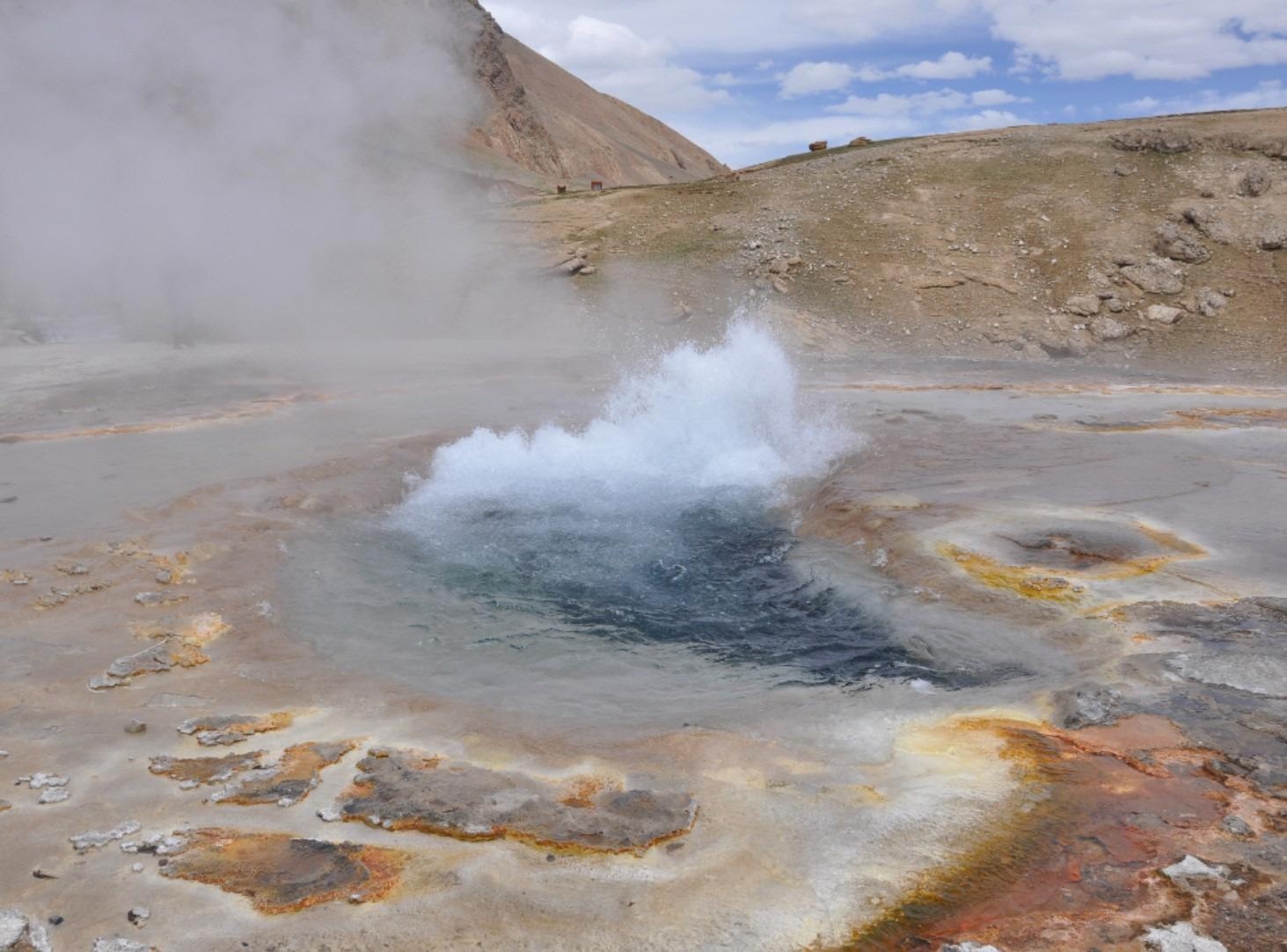Reviewed by Alex SmithAug 2 2021
A team of researchers headed by Professor Zhengfu Guo from the Institute of Geology and Geophysics (IGG) of the Chinese Academy of Sciences has discovered that the metamorphic and volcanic CO2 emission levels on Tibetan Plateau connect well with the Earth’s atmospheric CO2 curve.
 Deep CO2 emissions from Dagejia hydrothermal field in Tibetan plateau. Image Credit: Prof. Zhengfu Guo’s group.
Deep CO2 emissions from Dagejia hydrothermal field in Tibetan plateau. Image Credit: Prof. Zhengfu Guo’s group.
This indicates that the India-Asia collision was mainly responsible for the variations in atmospheric CO2 levels in the last 65 million years. The study results were published in the Nature Communications journal on June 23rd, 2021.
The global climate cooling that took place in the Cenozoic era, around 65 million years ago to the present, is considered to be associated with the decline in atmospheric CO2 concentrations, but the factors responsible for the decrease are still under debate.
Considering the India-Asia Collision, the scientists have analyzed the volcanic and tectonic contributions to atmospheric CO2 from deep terrestrial sources.
The scientists put forth a three-stage evolution model of Cenozoic magmatism in Tibet, considering the systematic geochemical information and analysis of the magmatic rocks found in the region.
The Stage 1 magmas (65 Ma–55 Ma) are Andean-type igneous rocks found in southern Tibet. The Stage 2 magmas (55 Ma–25 Ma) are formed by large-scale lava flows and pyroclastic deposits. The Stage 3 magmas belong to 25 Ma to present and consist of small volumes of lava flows, distributed in the northern and southern regions of Tibet.
We developed a continental collision-derived CO2 flux model (CCFM) to estimate the CO2 emission flux from magmatism and metamorphism across the whole Cenozoic. Calculated results yielded a broad range of CO2 degassing fluxes from ~0.0001 to 10 Pg (1 Pg = 109 Tons) in Cenozoic.
Zhengfu Guo, Professor, Institute of Geology and Geophysics, Chinese Academy of Sciences
The robust correlation between magmatic activity, modeled CO2 outstanding rate, source region composition and atmospheric CO2 concentration is completely consistent with a normal correlation between India-Asia collision and global CO2 variations, as well as the connected paleo-climate changes in the Cenozoic era.
This illuminates the contribution of carbon from subduction-induced carbonate metasomatism in the continental collision zones. The study was carried out in association with researchers from the University of Leeds and the Ludwig Maximilian University of Munich.
The study was financially supported by the Strategic Priority Research Program (B) and the Key Research Project of Frontier Sciences of Chinese Academy of Sciences, the National Natural Science Foundation of China, the Second Tibetan Plateau Scientific Expedition and Research Program, and the National Key Research and Development Program of China.
Journal Reference:
Guo, Z., et al. (2021) India-Asia collision as a driver of atmospheric CO2 in the Cenozoic. Nature Communications. doi.org/10.1038/s41467-021-23772-y.